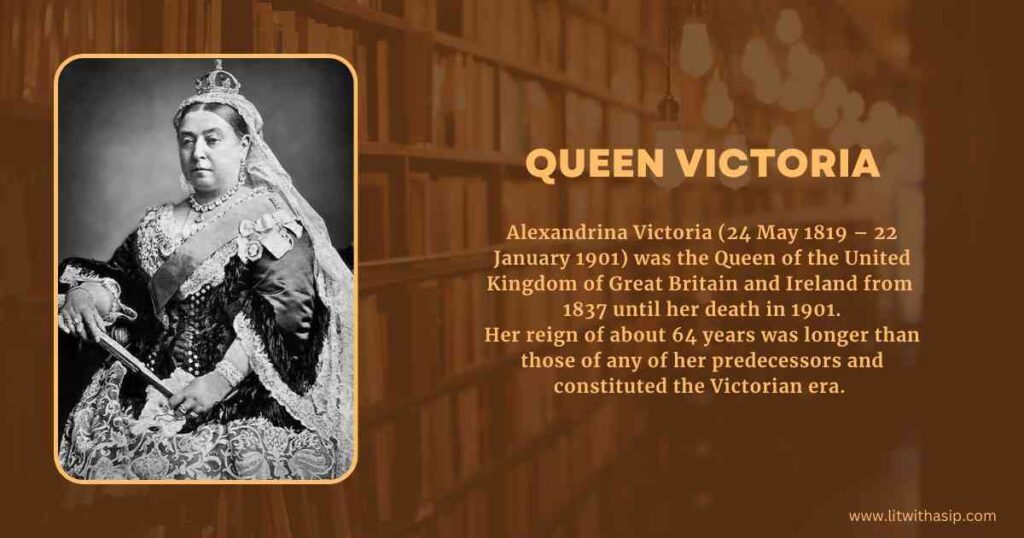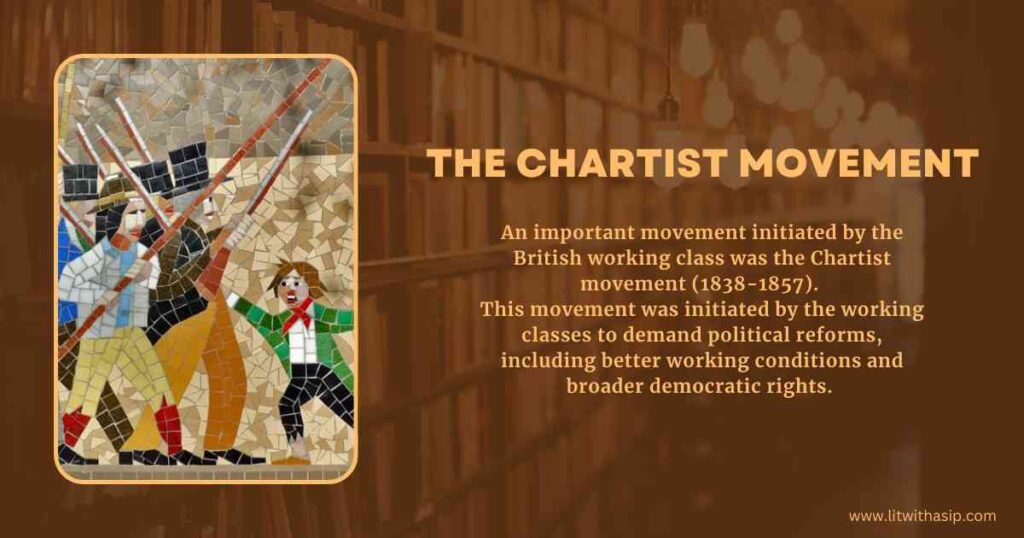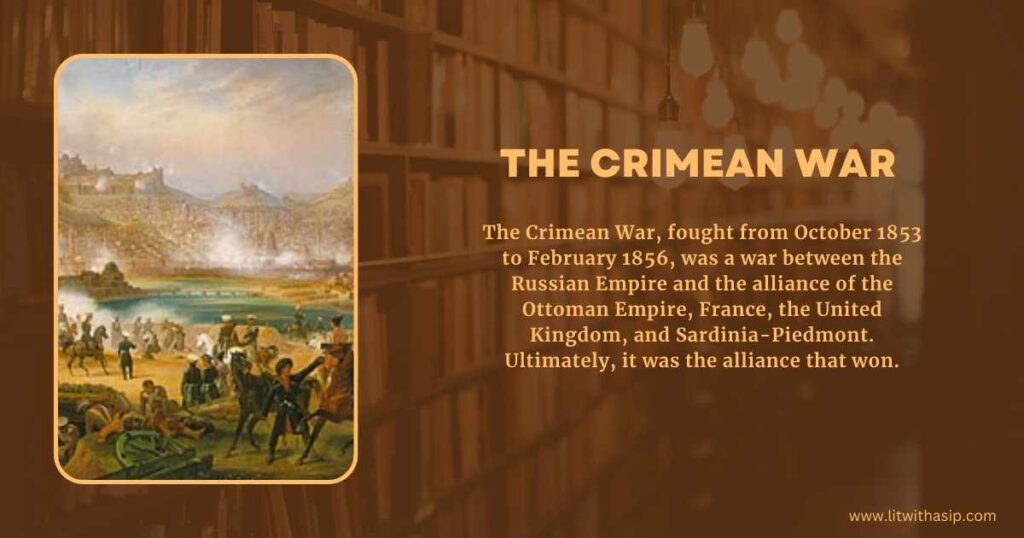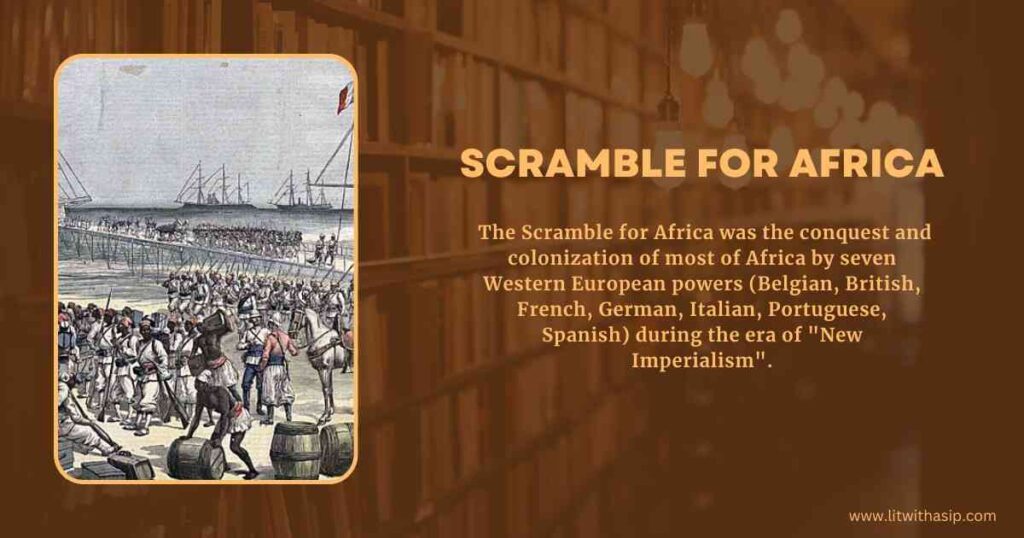Spanning through the 19th century, under the reign of Queen Victoria (1837-1901), the Victorian Era became a period where Britain obtained immense wealth and power by expanding its kingdoms and colonies throughout the globe. During the Victorian Era, Britain achieved remarkable industrial, political, scientific, and military advancements. This period was marked by the height of the Industrial Revolution, the expansion of the British Empire, and sweeping social reforms.

Victorian literature is renowned for exploring social class disparity, morality, gender roles, and the human condition, offering a vivid reflection of the dynamic and often tumultuous changes of 19th-century Britain. We can understand this literary period by dividing it into three parts, that is, Early, Middle, and Late Victorian Literature. This article delves into the same by providing an easy-to-understand sequence of events. Read till the end to comprehend the complete picture.
Early Victorian Literature (1830s-1840s)
Queen Victoria’s Ascension
In 1837, Queen Victoria ascended the throne, succeeding her uncle, King William IV (1830-1837). Her accession at the age of 18 ended the period of regency, providing a sense of stability and continuity to the British monarchy after the relatively short and tumultuous reigns of her predecessors.

The young queen’s emphasis on moral values and domesticity helped shape the cultural ethos of the era. Victoria’s early years were dominated by the Whig government under Lord Melbourne, who became her trusted advisor and influenced early policies. Victoria and her husband, Prince Albert, were patrons of the arts and education, which began to prove influential in the society of the time.
The Industrial Revolution
The initial years under the reign of Queen Victoria also witnessed Railway Expansion and Industrialization at its best with the transformations occurring rapidly. The Industrial Revolution (1760 to 1840), remembered as a pivotal period of rapid expansion and modernization, marked one of the most significant advancements in human history since the Neolithic Age. However, as transformative as it was, the revolution affected various segments of society negatively.
Also Read: The Dark Side Of Industrial Revolution
The Romantic Age was a response to the adversities that the Industrial Revolution led to, such as the devastation of the environment and immense pollution. Romantic writers, through their work, praised nature, criticized science and reason, and valued individuality and expression over everything. This gave way to Romanticism, a literary era that focused on nature and acknowledged the importance of emotion and individualism over reason and science.
Chartism

An important movement to note is the Chartist movement (1838-1857). This movement was initiated by the British working classes to demand political reforms, including better working conditions and broader democratic rights. Their demands were as follows:
- The right for all men above 21 to vote,
- equal electoral district ensuring fair presentation,
- an annually elected Parliament,
- and abolition of property given to Members of Parliament,
- payment for Members of Parliament to enable working-class candidates to serve, and
- introduction of a secret ballot to protect voter privacy and prevent corruption and intimidation.
Important Works Of Early Victorian Literature
Early Victorian Literary writers used their works to explore and critique various social issues and the struggles of individuals within the rapidly changing society, such as exploitation and inequality against the working classes. Some of the important writers and their works are as below:
- Charles Dickens is popularly known for writing vividly detailed and socially conscious novels that explore the struggles of the poor and marginalized in Victorian England. His works such as “Oliver Twist” (1837 to 1839) and “A Christmas Carol” (1843) are renowned for their memorable characters, intricate plots, and profound social commentary.
- Charlotte Brontë’s “Jane Eyre” (1847) explores the personal struggle of its titular character and protagonist, Jane Eyre, as a journey from being an abused orphan to an independent woman challenging the social norms about class and gender. The novel also addresses issues such as the oppressive conditions in charity schools and the limited opportunities available to women.
- “The Tenant of Wildfell Hall” (1848) by Anne Brontë addresses issues of women’s independence and the effects of alcoholism and abuse in marriage.
- “Vanity Fair” (1847-1848) by William Makepeace Thackeray is a satirical novel of manners, critiquing the superficiality and materialism of Victorian society.
- Elizabeth Gaskell’s “Mary Barton” (1848) provides a poignant depiction of working-class life in industrial Manchester and addresses social issues such as poverty, labor strikes, and the wide gap between the rich and the poor. Through the story of Mary Barton and her family, Gaskell highlights the struggles of the working class and the impact of industrialization on their lives.
- Emily Brontë’s “Wuthering Heights” (1847) is primarily known for its gothic and romantic elements. But, the novel also delves into social issues, particularly class conflict and the destructive nature of social exclusion.
- “Alton Locke” (1849) by Charles Kingsley focuses on the Chartist Movement. Along with poor working conditions, the novel addresses issues such as political disenfranchisement and the aspiration for social reform.
- Prose writers like Thomas Carlyle and Thomas Babington Macaulay added up to the historical and psychological works of the time.
The push for social reforms gained strength, addressing child labor and working conditions and related issues. For instance, the Factory Act (1833) helped regulate child labor by improving conditions for children working in factories. There also was an increasing awareness and subsequent action on public health issues, particularly in urban areas, which led to significant improvements over time, such as the introduction of Public Health Acts.
Middle Victorian Literature (1850s-1870s)
First And Second Reform Acts
During the Middle Victorian period (1850s-1870s), significant political developments shaped the backdrop against which literature was created. For instance, the First Reform Act, also known as the Reform Act of 1832, reformed the electoral system by redistributing seats in the House of Commons, eliminating many “rotten boroughs” (constituencies with very few voters), and extending the franchise to more men, particularly the middle classes. The Second Reform Act of 1867 expanded the electorate, allowing a larger portion of the working class to vote, which reflected and fueled growing demands for democratic reforms.
The Crimean War And Colonization

The Crimean War (1853-1856), which was fought between the Russian Empire and the victorious alliance of the Ottoman Empire, the United Kingdom, France, and Sardinia-Piedmont, highlighted the need for military and administrative reforms. It also influenced the public’s perception of national pride and patriotism.
Additionally, during this period, the British Empire experienced significant expansion, solidifying its status as the preeminent global power. Britain also started being recognized as “the empire on which the sun never sets,” emphasizing its global reach, with colonies and territories spread around the world, ensuring that at any given time, the sun was shining on at least one part of the empire.
Important Works Of Middle Victorian Literature
Marked by realism, social critique, and the rise of major novelists like George Eliot and Thomas Hardy and poets like Alfred Tennyson and Robert Browning, Middle Victorian Literature impacted society significantly. Some of the important writers and their works include:
- Charles Dickens came up with works like “Bleak House” (1852-1853), “Hard Times” (1854), and “Great Expectations” (1861). These works critique the British legal system, explored the harsh realities of industrial life and dehumanizing effects of utilitarian philosophy.
- Works from George Eliot include “Adam Bede” (1859), “The Mill on the Floss” (1860), and “Middlemarch” (1871-1872). These works examine social change, political reform, individual aspirations, and moral conflicts.
- Matthew Arnold’s poem “Dover Beach” (1867) and essays like “Culture and Anarchy” (1869) are also some important works. The former reflects on the loss of faith and certainty in the modern world, the latter portrays the role of culture in a society.
- Anthony Trollope’s works like “Barchester Towers” (1857) and “The Way We Live Now” (1875) critique religious politics, greed and corruption of Victorian society, and related social issues.
- Elizabeth Gaskell’s “North and South” (1854-1855) addresses the class divide and industrial conflict through the story of Margaret Hale.
- Thomas Hardy’s “Far from the Madding Crowd” (1874) examines rural life, social class, and romantic entanglements.
- “Alice’s Adventures in Wonderland” (1865) by Lewis Carroll is a whimsical, fantastical tale that has delighted both children and adults, exploring themes of logic, absurdity, and imagination. Its sequel, “Through the Looking-Glass” (1871), continues Alice’s journey critiquing the Victorian Age through fantastical elements.
- Poets like Alfred, Lord Tennyson, and Robert Browning continued to produce significant works that reflected Victorian concerns and aesthetics. Elizabeth Barrett Browning wrote a collection of love sonnets named “Sonnets from the Portuguese” (1850) that were addressed to her husband, Robert Browning. Elizabeth’s novel “Aurora Leigh” (1856) explores the role of women in society and the artist’s life.
- Dante Gabriel Rossetti’s poems, including “The Blessed Damozel” (1850), gained attention from readers. Also, his sister Christina Georgina Rossetti wrote poems like “Goblin Market” (1862).
The literature of this period played a crucial role in shaping public opinion and fostering social awareness. There was an increased emphasis on Realismand Naturalism, aimed at portraying life accurately and objectively. Many novels were published in serialized form in magazines and newspapers, making literature more accessible to a wider audience.
It is important to note that during the Victorian Era, novels, as a form of literature, rose to popularity. This is due to the increased literacy rates, advances in printing technology, and the expanding middle class, which created a larger audience eager for entertainment and social commentary. As a result, this era saw innovations in narrative structure, character development, and thematic depth that influenced future literary movements.
Late Victorian Literature (1880s-1900s)
Political Front And Reforms
The late Victorian period was characterized by a complex interplay of domestic reforms, imperial expansion, economic challenges, and evolving social movements. The Representation of the People Act 1884, also called the Third Reform Act, extended voting rights further, particularly to rural workers and urban working-class men, though women still did not have suffrage.
The rise of organized labor led to the formation of the Labour Representation Committee in 1900, a precursor to the Labour Party, reflecting growing working-class political consciousness. The issue of Irish Home Rule dominated political discourse and sought to grant Ireland greater autonomy or even independence from Britain, accelerating political debates and divisions.
Challenges To Colonization

Britain continued to expand its colonial holdings, particularly in Africa, where the “Scramble for Africa” intensified competition with other European powers. The First Boer War (1880-1881) and the Second Boer War (1899-1902) in South Africa highlighted tensions over British imperialism and its impact on indigenous populations.
Diplomatic maneuvers and alliances, particularly with Germany and France, shaped British foreign policy as Europe experienced heightened geopolitical tensions, later leading to war-like situations. Economic depressions in the late 19th century, such as the Long Depression (1873-1896), posed challenges to British industry and agriculture, influencing political priorities.
Intellect And Religion
This period was also accompanied by intellectual developments. For instance, the application of Darwinian ideas to social and political realms influenced debates on race, imperialism, and eugenics. Early intellectual currents included Fabian socialism, anarchism, and early feminist movements. These challenged the established social and political norms.
The Oxford Religious Movement, a 19th-century initiative within the Church of England, sought to revive Catholic traditions and emphasize the sacraments and apostolic succession. It opposed Darwinian ideas and other scientific theories challenging traditional religious beliefs, aiming to reaffirm the Church’s spiritual and doctrinal foundations amidst growing secularism and skepticism.

At the same time, celebrations of Queen Victoria’s Jubilee underscored national unity and imperial pride, despite the social and political struggles of common working people.
Important Works Of Late Victorian Literature
Late Victorian Literature was characterized by diverse styles and themes like Gothic fiction, Aestheticism (an art movement that valued aesthetics over practical or moral considerations), and existentialism (a psychological inquiry into human existence). This also resulted in a transition towards modernist themes.
Literary works during this period not only reflected the complexities and anxieties of the time but also laid the groundwork for the literary innovations of the 20th century. Some of the notable works and their writers are listed as follows:
- “The Picture of Dorian Gray” (1890) by Oscar Wilde explores themes of aestheticism, moral decay, and the pursuit of beauty. Wilde’s plays such as “The Importance of Being Earnest” (1895) are also known for their wit and satire of the society at that time.
- Poetry by Algernon Charles Swinburne is characterized by its lyrical intensity and exploration of sensual and decadent themes. Works like “Poems and Ballads” (1866) exemplify his contributions to the aesthetic movement.
- One of the most famous Gothic novels, “Dracula” (1897) by Bram Stoker combines elements of horror, folklore, and Victorian anxieties about science, sexuality, and the Other. It has an important place in vampire literature and Gothic fiction.
- “Strange Case of Dr Jekyll and Mr Hyde” (1886) by Robert Louis Stevenson explores the dual nature of humanity and the consequences of unchecked scientific experimentation. It delves into themes of morality, identity, and the darker aspects of human psychology.
- “Tess of the d’Urbervilles” (1891) by Thomas Hardy is often associated with the realist tradition of the Victorian era. His later works, including “Tess”, show a transition towards modernist themes such as existentialism, fate, and the struggle against societal constraints.
- Joseph Conrad’s “Heart of Darkness” (1899) examines imperialism and the moral darkness within human nature. It anticipates modernist themes of alienation, existentialism, and the fragmentation of identity.
- “New Grub Street” (1891) by George Gissing critiques the struggles of writers in a commercialized literary marketplace, addressing themes of social mobility, the challenges of intellectual life, and the effects of capitalism on artistic creativity.
- A.E. Housman’s collection of poems “A Shropshire Lad” (1896) reflects themes of nostalgia, fleeting youth, and the transience of life, capturing a sense of melancholy and loss that resonated with late Victorian audiences.
Concluding Notes
In a nutshell, while the Victorian Era saw gigantic material developments, there were significant advancements in literature too. Social problem novels, satires on Victorian morality, poetic expressions, revolts against pre-existing social and political norms, the influence of science and religion, and the popularity of literary forms like novels, gained traction.
The Victorian Era gave way to the Edwardian era, which spanned the reign of King Edward VII from 1901 to 1910. It consisted of more relaxed social norms and lifestyles compared to the strict moral codes earlier. The pace of technological innovation and scientific discovery continued to accelerate. Continued efforts for social reforms, including women’s suffrage and labor rights, gained momentum. The slow transition from Victorian to Modernism had begun, with authors and artists experimenting with new styles and themes.
The Edwardian era served as a bridge between the Victorian period and the more radical transformations of the 20th century. The world wars were yet to come resulting in major impacts not only on literature but also on the history of the world. We will explore these transitions and their role in literature in the Modernist Era.

Jennis Jacob, a passionate literary enthusiast in her 20s, is a writer and poet. With eight years of experience in literature, she is currently a master in English and finds inspiration in Womanist, American, and Indian Partition Literatures. Her works have appeared in anthologies such as ‘Carved Words Of Creative Minds’ and ‘100 Splendid Voices,’ and she is working on upcoming books. Through LitWithASip, she aims to ignite a love for literature and empower individuals to embrace their true selves.


You got a very wonderful website, Sword lily I detected it through yahoo.
I am glad that I discovered this blog, precisely the right info that I was looking for! .
Thanks for the sensible critique. Me and my neighbor were just preparing to do some research about this. We got a grab a book from our local library but I think I learned more from this post. I’m very glad to see such magnificent information being shared freely out there.
You got a very superb website, Gladiolus I discovered it through yahoo.
Keep up the good piece of work, I read few content on this website and I think that your site is really interesting and contains sets of fantastic info .
Thanks for the sensible critique. Me & my neighbor were just preparing to do a little research on this. We got a grab a book from our area library but I think I learned more from this post. I’m very glad to see such wonderful info being shared freely out there.
You have brought up a very good points, appreciate it for the post.
Hi! This is kind of off topic but I need some advice from an established blog. Is it hard to set up your own blog? I’m not very techincal but I can figure things out pretty fast. I’m thinking about making my own but I’m not sure where to begin. Do you have any tips or suggestions? Thanks
Please let me know if you’re looking for a author for your site.
You have some really great posts and I feel
I would be a good asset. If you ever want to take some of the
lload off, I’d really like to write some material for
your blog in exchange for a link back to mine. Please send me an e-mail if interested.
Thanks!
I enjoy your writing style genuinely enjoying this site.
Hello my friend! I want to say that this post is amazing, nice written and come with approximately all significant infos. I would like to see extra posts like this .
Pretty section of content. I simply stumbled upon your weblog and in accession capital to assert that I get actually loved account your blog posts. Any way I will be subscribing for your feeds or even I achievement you access consistently fast.